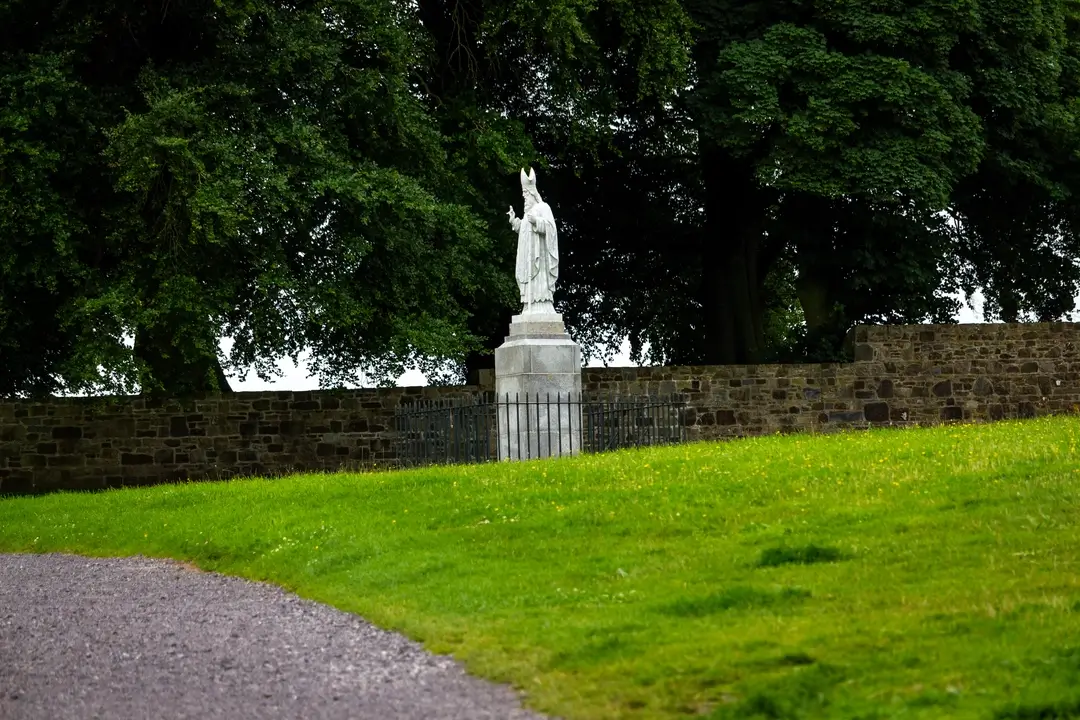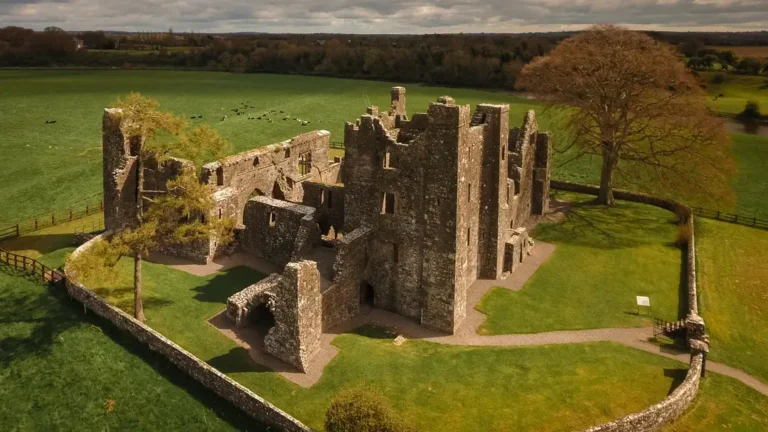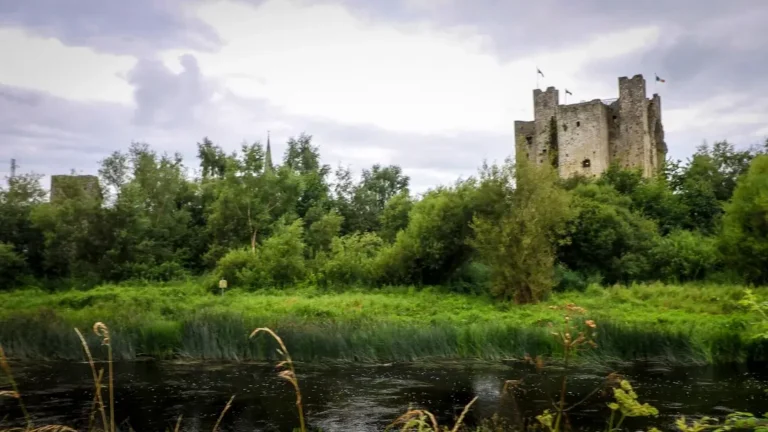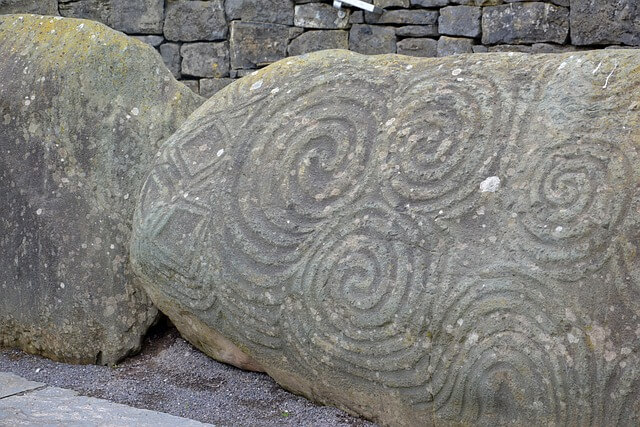Hill of Tara and Saint Patrick
The Hill of Tara is this really old spot in Ireland, famous for being where ancient kings hung out. But then, Saint Patrick shows up, and things get interesting. This whole story about Saint Patrick and the Hill of Tara is a big deal for understanding how Christianity took hold in Ireland. It’s a mix of old traditions and new beliefs, all happening in one important place.
Key Takeaways
- The Hill of Tara was a major center for Irish kings and pagan rituals before Saint Patrick arrived.
- Saint Patrick directly challenged pagan practices at Tara by lighting the Paschal Fire.
- The confrontation between Saint Patrick and the druids at Tara led to the eventual spread of Christianity.
- The Hill of Slane played a key role in Saint Patrick’s strategy to introduce Christianity to the Boyne Valley.
- The legacy of Saint Patrick at Tara is still recognized today through various efforts to preserve and interpret the site’s history.
The Hill Of Tara’s Ancient Significance
The Hill of Tara, located in County Meath, Ireland, is more than just a scenic spot; it’s a place steeped in history and legend. For centuries, it has held a central position in Irish culture, serving as a focal point for political, religious, and social life. It’s a place where you can almost feel the echoes of the past.
Early Historical Importance
Tara’s significance stretches back to the Neolithic period. Archaeological evidence suggests human activity here as early as the Stone Age, with a passage tomb indicating its early importance. However, it was during the Iron Age (roughly 600 BC to 400 AD) that Tara truly rose to prominence. It became known as the seat of the High Kings of Ireland, a place where rulers were inaugurated and important decisions were made. All old Irish roads lead to this critical site.
The Lia Fail Stone
One of the most iconic features of the Hill of Tara is the Lia Fáil, also known as the Stone of Destiny. This ancient stone is said to have roared when a true king of Ireland stood upon it. It’s one of the four legendary treasures of the Tuatha Dé Danann. The stone stands proudly on An Forradh, a monument on the hill. It’s a powerful symbol of Irish kingship and a tangible link to the island’s rich mythological past.
Guided Tours And Site Exploration
Exploring the Hill of Tara is best done with a guide. A guided tour can really bring the history to life, helping you understand the layout of the site and the significance of its various monuments. While the halls and palaces of old have disappeared, the earthworks that remain offer a glimpse into the past. You can wander the grounds, imagine the great gatherings that once took place here, and soak in the atmosphere of this exceptional place. There are also educational resources available for those who want to learn more before or after their visit.
Visiting Tara is like stepping back in time. The views from the top are amazing, and it’s easy to see why this place was so important to the ancient Irish. It’s a place that connects you to the past and makes you think about the stories that have been told here for centuries.
Here’s a quick list of things you might see:
- The Mound of the Hostages (a passage tomb)
- Ráith na Rí (the Enclosure of the Kings)
- The Teach Miodhchuarta (the Banqueting Hall)
Saint Patrick’s Arrival In Ireland
Journey Up The Boyne
Saint Patrick’s arrival in Ireland is a pretty big deal, especially when you consider the impact it had on the country’s religious landscape. He didn’t just pop up anywhere; he strategically chose his entry point. Following a route reminiscent of ancient figures, Patrick sailed up the River Boyne, marking the beginning of his mission to spread Christianity.
Think about it: landing at Inbher Colpa, much like Amergin did way back when? It’s like history repeating itself, but with a whole new purpose. This journey wasn’t just about getting from point A to point B; it was a symbolic act, setting the stage for the clash between the old pagan ways and the new Christian faith. It’s a pretty interesting way to start a religious revolution, if you ask me. You can experience the same journey with Boyne Valley tours.
The Paschal Fire
Okay, so picture this: it’s almost time for the Feast of Tara, a huge deal for the Druids. Everyone’s getting ready for their pagan rituals, and then BAM! Saint Patrick decides to light the Paschal Fire on the Hill of Slane. Talk about making an entrance! This wasn’t just some random bonfire; it was a direct challenge to the existing religious order. It was a bold move, especially considering the Druids were basically the religious authority at the time.
Here’s a quick rundown of why this fire was such a big deal:
- It directly defied the pagan rituals.
- It was lit in anticipation of Easter.
- It was a symbol of the new Christian faith.
Lighting the Paschal Fire was more than just a religious act; it was a statement. It was Patrick saying, “Hey, there’s a new sheriff in town,” and it definitely got everyone’s attention, especially King Laoghaire and his Druids.
Defiance Of Pagan Rituals
So, the Paschal Fire is blazing, and King Laoghaire is not happy. The Druids warn him that if that fire isn’t put out immediately, it’ll never be extinguished. Talk about high stakes! This sets the stage for a pretty intense showdown between Patrick and the pagan establishment. It wasn’t just about lighting a fire; it was about challenging the very core of their beliefs and practices. The Hill of Tara was the center of power, and Patrick was directly challenging that power. It’s a classic case of old versus new, and the fate of Ireland hung in the balance. It’s a pretty dramatic moment in Irish history, and it all started with a single, defiant flame.
The Confrontation At Tara

The story of Saint Patrick at the Hill of Tara isn’t just a simple tale; it’s a clash of cultures, beliefs, and power. It’s a moment where the old ways of Ireland met the new religion of Christianity, and the outcome would shape the country’s future. It’s a pretty big deal when you think about it.
King Laoghaire’s Outrage
King Laoghaire, the High King of Ireland, was not thrilled about some random dude lighting a fire that directly challenged his authority. The Paschal fire, lit by Patrick on the Hill of Slane, was a direct violation of a pagan ritual that only the High King was allowed to initiate. Imagine someone setting off fireworks when only you are supposed to. That’s the level of disrespect Laoghaire felt. He saw it as a challenge to his power and the traditional ways of the land. The king was not happy, to say the least.
Druidic Challenges
The Druids, who were basically the priests and wise people of the pagan religion, weren’t about to let some newcomer waltz in and change everything. They saw Patrick as a threat to their influence and the established order. They challenged him to a battle of wits and magic, trying to prove that their gods were more powerful. It was like a spiritual showdown, with the fate of Ireland hanging in the balance. One account even mentions a cursing of Tara!
Conversion To Christianity
Despite the challenges and the initial resistance, Patrick’s message resonated with some. He used his knowledge of Irish culture and storytelling to connect with the people, explaining Christianity in a way they could understand. Over time, some members of the court, and eventually King Laoghaire himself (though accounts vary on the extent of his conversion), began to accept Christianity. This wasn’t an overnight thing, but a gradual shift in belief that laid the foundation for the establishment of Christianity in Ireland.
It’s important to remember that this wasn’t a simple case of good versus evil. Both sides had their own beliefs and motivations. The confrontation at Tara was a complex event with lasting consequences for Irish history and culture. It’s a story that continues to be debated and reinterpreted to this day.
The Hill Of Slane’s Role
Mythology Predating Saint Patrick
Like the Hill of Tara, the Hill of Slane boasts a rich history that extends far before the arrival of Saint Patrick. Its ancient significance is deeply rooted in Irish mythology and folklore. According to some old stories, the burial mound at the top of the hill is said to be the final resting place of Sláine, an early Irish king who led the Gálioin, a group within the Fir Bolg. This connection to ancient kings and mythical figures gives the Hill of Slane a special place in Ireland’s pre-Christian past. It’s a place where history and legend mix together, creating a sense of mystery and wonder.
Saint Erc’s Monastery
Saint Erc, a disciple of Saint Patrick, founded a monastery on the Hill of Slane. This monastery became a center for early Christian activity in the region. While the exact details of Saint Erc’s life and work are not widely known, his presence on the Hill of Slane is a testament to the spread of Christianity in Ireland during the 5th century. The monastery likely played a role in converting the local population and establishing Christian traditions. The Hill of Slane became a symbol of the transition from paganism to Christianity.
Strategic Location
The Hill of Slane’s location is no accident. Its elevated position provides panoramic views of the surrounding countryside, making it a strategically important site throughout history. From the top, you can see for miles in every direction, which would have been useful for defense and communication. The hill’s location near the River Boyne also added to its importance, as the river served as a major transportation route. This strategic advantage likely contributed to the hill’s significance in both pre-Christian and Christian times. It’s easy to see why people have been drawn to this spot for centuries.
The Hill of Slane’s commanding view and proximity to the Boyne River made it a valuable location for various purposes throughout history. Its physical attributes contributed significantly to its cultural and religious importance.
Here’s a quick look at some of the advantages of its location:
- Excellent visibility of the surrounding area
- Proximity to a major river for transportation
- Natural defensive position
The Legacy Of Saint Patrick At Tara
Establishment Of Christianity
Saint Patrick’s actions at Tara, while confrontational, ultimately paved the way for the widespread adoption of Christianity in Ireland. It wasn’t an overnight thing, of course. The conversion was gradual, but his defiance of the pagan rituals at such a significant site sent a clear message. He challenged the existing power structure and offered an alternative spiritual path.
- Established churches and monasteries.
- Trained local clergy.
- Integrated some Celtic traditions into Christian practices.
The cool thing is that Patrick didn’t just bulldoze everything. He was smart about it. He understood the importance of the existing culture and tried to blend the new faith with the old ways. This approach made Christianity more accessible and acceptable to the Irish people.
Symbolic Importance
The Hill of Tara, even after the confrontation, remained a place of huge symbolic importance. It became a site where the old and new religions intertwined. Patrick’s presence there forever changed its meaning. It’s not just a pagan site anymore; it’s a place where Christianity took root in Ireland. The Hill of Tara’s significance is undeniable.
Enduring Influence
Saint Patrick’s legacy at Tara continues to resonate today. The story of his confrontation with the druids is a key part of Irish history and folklore. It represents the triumph of Christianity, but also the resilience of Irish culture. His actions at Tara helped shape the religious and cultural landscape of Ireland for centuries to come. People still visit the Saint Patrick statue to this day.
Here’s a quick look at his influence:
| Aspect | Impact |
|---|---|
| Religion | Spread of Christianity |
| Culture | Blending of Celtic and Christian traditions |
| National Identity | Part of Irish national story |
Modern Interpretations Of Saint Patrick At Tara
The Saint Patrick Statue
There’s a statue of Saint Patrick on the Hill of Tara, and it’s become a focal point for visitors. It’s not ancient, but it serves as a reminder of the historical and religious significance of the site. The statue is a relatively recent addition, erected to honor Saint Patrick’s legacy. People often take photos with it, and it’s a common meeting point for tours. It’s a tangible representation of the stories and legends associated with the hill.
Restoration Efforts
The Hill of Tara is an archaeological site, so there are ongoing efforts to preserve and protect it. Erosion, weather, and general wear and tear take their toll. Restoration projects aim to stabilize the monuments, improve drainage, and prevent further damage. These efforts often involve archaeologists, historians, and local community members working together. It’s a balancing act between preserving the site’s historical integrity and making it accessible to the public. The Hill of Slane is also undergoing similar preservation efforts.
Community Involvement
The local community plays a big role in the Hill of Tara’s modern identity. There are local guides who share the history and folklore of the site. Community events, like festivals and historical reenactments, help to keep the stories alive. People who live nearby often feel a strong connection to the hill, viewing it as a sacred and important place. The community’s involvement helps to ensure that the Hill of Tara remains a vibrant and meaningful landmark. The community also helps to maintain the Saint Patrick statue.
The Hill of Tara is more than just a historical site; it’s a living landscape shaped by the stories, beliefs, and actions of generations. Modern interpretations blend historical research, religious significance, and community engagement to create a rich and evolving understanding of this iconic place.
Here are some ways the community is involved:
- Organizing guided tours
- Hosting cultural events
- Participating in conservation projects
Today, people see Saint Patrick’s time at Tara in many new ways. To learn more about these fresh ideas, visit our site!
Conclusion
So, that’s the story of the Hill of Tara and Saint Patrick. It’s pretty clear that this spot has been important for a really long time, even before Saint Patrick showed up. You’ve got all these old legends and kings tied to it, and then Saint Patrick comes along and, well, changes things. It’s interesting how he kind of took over the old traditions and made them his own. Even today, you can still feel that history when you visit. It’s a place where ancient Irish culture and the start of Christianity in Ireland really come together. Pretty cool, right?
Frequently Asked Questions
Why was the Hill of Tara so important before Saint Patrick arrived?
The Hill of Tara was a really important spot in ancient Ireland, especially during the Iron Age. It was the main place where the High Kings of Ireland ruled from. Think of it as their capital city.
What is the Lia Fáil Stone?
The Lia Fáil, also called the Stone of Destiny, is a large standing stone on the Hill of Tara. It was believed to roar when the rightful High King of Ireland touched it. It’s a very old and special part of Irish history and myths.
When and how did Saint Patrick arrive in Ireland?
Saint Patrick came to Ireland in the 5th century. He sailed up the River Boyne and chose the Hill of Slane to light a big fire, which was a way of showing his arrival and challenging the old pagan ways.
Who was King Laoghaire and what was his reaction to Saint Patrick?
King Laoghaire was the High King at Tara when Saint Patrick arrived. He was upset by Patrick lighting the Paschal Fire because it went against the pagan rituals. The King and his priests tried to stop Patrick, but they couldn’t.
What is the significance of the Hill of Slane in this story?
The Hill of Slane is important because Saint Patrick lit his first Paschal Fire there. This fire was a direct challenge to the pagan leaders at Tara and marked the beginning of Christianity spreading in Ireland.
What was the lasting impact of Saint Patrick’s visit to Tara?
Saint Patrick’s actions at Tara led to the start of Christianity in Ireland. Even though the old pagan ways were strong, Patrick’s message eventually won over many people, including the King. This event is a big part of why Ireland became a Christian country.





